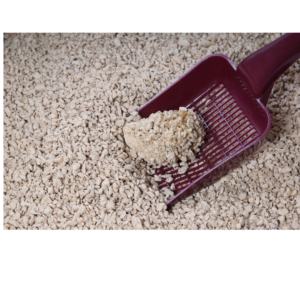Calling BS
Yesterday, an FDA advisory was delivered to my inbox. Today, my news alerts are blowing up with news of the dangers of feeding raw pet food. I am writing this, and losing hours of my life I can never reclaim, to share with you what utter bullsh*t this is. 
Here’s the story. Several months ago — yes, months — kittens ate some commercial raw food from an adult cat’s bowl. The kittens subsequently developed diarrhea. The adult cat remained normal. The owner, as they should, reached out to the company. They were advised that the company recommends not feeding raw products to kittens under four months old, as stated in company literature. And to be cautious, they were instructed to discard any remaining food. The company also issued a full refund. The kittens did not require further veterinary intervention, and the adult cat remained healthy.
The consumer also shared their experience with the FDA, who tested samples of the food and found “traces” of salmonella. Independent testing of samples did not find any salmonella. No other reports of sickness or other complaints were received by the company.
It’s important to note that the batches of food implicated were produced on May 2 and May 4 of this year. The company sells directly to the consumer, and these lots were shipped months ago, and likely all have been fed by this time. So why is FDA advising not to feed this product on August 5, 2022? If this is such a serious threat to human and animal health (as stated in the advisory), why has it taken so long to share this info?
It is shared that in fecal testing, one of the kittens was positive for salmonella, yet there was no matching of it to the salmonella found in the food. There are many strains of salmonella, and they can be found in the stool of kibble eating dogs and cats, as well as on human food. Face it — we live in a world where there are bacteria everywhere. We do not know if the kitten’s positive salmonella result was truly from the food. We don’t even know how the stool sample was collected — but if from a litterbox used by multiple cats, we must consider contamination possible. (There were at least 5 cats in the household in question.)
Finally, as a practicing veterinarian, I hear numerous reports of pets that ingested a food they were not used to, and developed vomiting or diarrhea or both. This could be from a new canned food, a new topper, even a different kibble. It can happen to sensitive humans who eat something they are not used to. Yet it seems anytime some sort of fresh food is involved, there is a rush to sound the Salmonella alarm. No one raises so much as an eyebrow when a dog gets diarrhea after eating a can of Blue Buffalo.
I applaud this company for standing up to FDA and refusing to issue a warning, when there was nothing to warn anyone about — especially so long after it was likely consumed by pets with no reported problems. I believe today’s pet owner has become more knowledgeable, and sees this for what it is — a thinly veiled attack on the commercial fresh food sector, with the intent to alarm pet owners and scare them away from feeding in a way that aligns with their pet’s biology. And the days of fooling today’s savvy pet owner? Well, they are numbered.